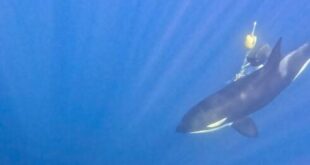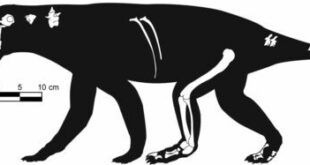The Balearic Islands launched an urgent operation to combat the spread of invasive serpents.
Researchers from the University of Oxford have made an alarming discovery on Sa Dragonera, a protected island.
At the end of April, a camera trap placed by Oxford scientists – who were monitoring nests of the endangered Balearic shearwater (Puffinus mauretanicus) – captured the first image of a horseshoe snake (Hemorrhois hippocrepisOn the island.
READ MORE Benidorm’s nature park is home to six snakes that can save lives.
The sighting triggered an immediate response from the Regional Ministry of Agriculture, Fisheries and the Environment, which warned of the snake’s potential to cause ‘serious problems’ to the fragile local ecosystem.
Anna Torres Director General for Environment and Forest Management said: “Invasive Snakes can pose a severe problem in environments so fragile as the Islands.”

She added that it was vital ‘to safeguard protected and endangered species that could be affected by the presence of invasive snakes.’
The Consortium for the Recovery of the Fauna of the Balearic Island (Cofib) is leading the campaign to assess the extent of the invasion, and protect the indigenous fauna.
There are 95 traps, 85 on the islet itself, seven along the coast of Mallorca and three on Es Pantaleu.
All traps have been georeferenced and are regularly checked by technicians. They are also placed far from public footpaths.
The operation comes as part of a wider concern about the growing dominance of horseshoe snakes in the Balearics – particularly in Ibiza, where the native Pitiusa lizard (Podarcis pityusensisBy 2030, the species is threatened with extinction.
Snakes introduced to the Island in early 2000s are flourishing due to an abundance of food and lack of predators.
Biologist Jaume Estarellas has warned of the unusual growth of Ibiza’s snake population, noting that ‘gigantism’ has become common.
A record-breaking individual of 183 centimetres, which is far beyond the species’ average size of 89 centimetres, was captured in 2013.
The situation is critical despite ongoing efforts. This includes a campaign in 2024 that removed almost 500 snakes and installed 280 new traps.
The Institut d’Estudis Eivissencs has described the invasion as ‘practically unsolvable’ and said that actions taken so far ‘have not been sufficiently successful.’
 Costa News Spain Breaking News | English News in Spain.
Costa News Spain Breaking News | English News in Spain.





